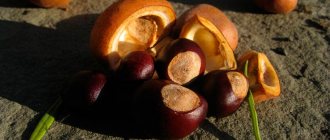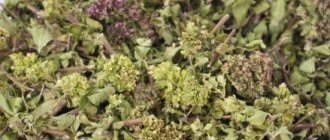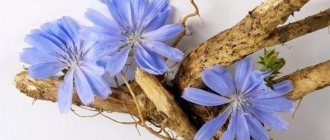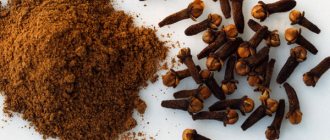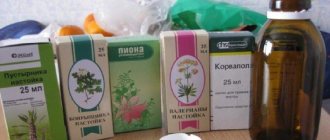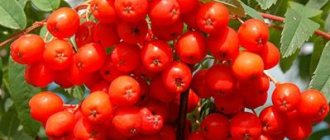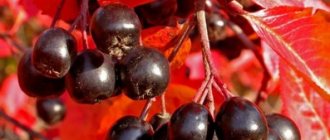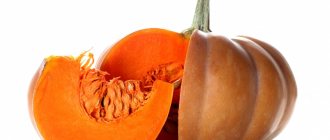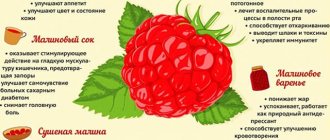Hello, my dear readers!
The medicinal properties of horse chestnut have been known for a long time.
Moreover, you’ve probably already noticed how much they say now that horse chestnut for varicose veins is simply a universal remedy No. 1!!!
It is an active component in the manufacture of ointments, creams, and tinctures for this disease.
And since the misfortune haunts so many women, and men too, information about this plant will be useful and interesting to many.
Horse chestnut: medicinal properties and contraindications
What is treated with horse chestnut, and what properties does it have? It has found application in medicine and cosmetology. The beneficial properties of this mighty tree are very extensive, and the indications for use are quite an impressive list. There are also contraindications, but first things first. If we consider horse chestnut as a medicine, we should understand in more detail all aspects of the issue and study its chemical composition.
Expert opinion
Horse chestnut seeds and tree bark contain saponins (triterpene glycoside) with a complex structure (escin, artrescine, fraxin, esculin, coumarin), as well as a large amount of flavonoid glycosides (quercetin triosides, quercitrin, isoquercitrin, kaempferol). In addition, groups of vitamins B, C, E, K, starch and oil.
Vascular surgeon, phlebologist
Osipova Ekaterina Yakovlevna
Horse chestnut flowers are also used, because their rich composition gives them certain physical and chemical properties. Flowers contain: kaempferoglycoside, flavonoids (rutin, quercetin, astragalin), triterpene saponin. Moreover, they are rich in sugars, tannins and choline.
Ratios for the use of medicinal plants for the treatment of varicose veins
In addition to the above active components, this plant has a rich complex of macro- and microelements, as well as minerals. You can voice such elements as iron, calcium, nickel, boron, chromium, zinc, barium, iodine, selenium and silver. Therefore, due to their unique composition, preparations containing horse chestnut are widely used in the treatment of various diseases.
In order for the positive effect of the inflorescences, seeds, bark and leaves of the tree to be maximum, it is important to prepare them correctly. The collection of inflorescences and foliage for medicinal purposes begins in late spring and ends in early autumn. Tree bark is collected in the spring after trees are pruned. They remove it from branches whose age does not exceed 3-5 years. Seeds (fruits) are harvested as they ripen and immediately fall. Drying occurs either in special dryers or in designated rooms with moderate ventilation and without direct access to sunlight, which is detrimental to beneficial properties.
Horse chestnut: medicinal properties
As mentioned earlier, this plant has a solid list of medicinal properties. For example, an extract from horse chestnut seeds has anti-edematous, venotonic and anti-inflammatory effects. Therefore, it is used for inflammatory processes in the veins and trophic ulcers. Medicines and preparations based on horse chestnut help both in the treatment of varicose veins and are used in complex therapy in the treatment of hemorrhages, hypertension (Hypertonia) and other diseases due to their diuretic, hemostatic and wound-healing properties.
Horse chestnut: contraindications
The healing properties of the plant are like one side of the coin, the other is contraindications. Unfortunately, they exist and it is important to know about them.
!
Before using horse chestnut, it is important to familiarize yourself with its contraindications.
First of all, it is worth noting that contraindications directly depend on the dosage form and the composition of the product used as a whole. Medicines from horse chestnut and drugs taken orally, both for veins and for other purposes, are contraindicated for use by people:
- with stomach ulcers;
- with pathologies of the urinary and intestinal systems;
- with chronic liver diseases;
- with low blood pressure;
- in childhood;
- during pregnancy and lactation (Lactatio) (there are exceptions);
- for menstrual irregularities.
Of course, you can only get complete information about the possibility of taking a particular drug from your attending physician.
How to collect and prepare
Pharmacy chains offer us a large selection of dry horse chestnut preparations. However, if the plant grows in your area, it is quite possible to prepare it for future use yourself and use it in the treatment of varicose veins. Different parts of the plant can be used, the harvesting methods are slightly different.
- The collection of leaves and inflorescences begins in May, at the time when the tree or shrub begins to bloom profusely. The raw materials are washed under running water. Dry on paper or dry cloth, laying them out in a ventilated room, hiding from direct sunlight. Such drying can take a long time, so the raw materials need to be stirred daily to prevent them from becoming moldy.
- Horse chestnut kernels are harvested in the fall, just before the fruits become round and begin to ripen. Ripe kernels do not have a high content of medicinal components, so the kernels are collected in an unripe form. If you need to clear the kernels from the green peel, then remove it with a knife.
- The fruits of the plant are often used for treatment. They are selected in an already mature state. If necessary, grind it using a meat grinder or use it whole.
- The tree bark is removed at any time and crushed before drying.
Dry the kernels, bark and fruits in the same way as the leaves - in a dark place where it is warm and has good air circulation.
Important! If drying horse chestnut is done incorrectly, the plant will be useless during treatment - it will lose the main part of its medicinal components.
Horse chestnut: application
The healing properties that horse chestnut has give it a fairly wide range of application. It is valued by the beauty industry and is used in cosmetics for the face and body, in masks and shampoos for washing hair, and also helps get rid of cellulite. In pharmacy kiosks you can find various creams, ointments and gels for feet based (with extract) of horse chestnut. A medicinal product based on horse chestnut will help in the treatment of thrombophlebitis (Thrombophlebitis), radiculitis (Radiculitis), prostatitis (Prostaritis), hemorrhoids, neuralgia (Neuralgia), leukosis (Leukosis), bronchitis (Bronchitis), radiation sickness, tuberculosis ( Tuberculosis) and many other diseases. In gynecology, products are also often used, including traditional medicine, containing horse chestnut. Horse chestnut helps stop uterine bleeding and alleviates the symptoms of menopause in women.
In general, the benefits of using horse chestnut are quite great:
- elimination of edematous syndrome and foci of inflammation;
- decreased blood viscosity;
- prevention of blood clots;
- increased venous tone;
- acceleration of blood flow in vessels;
- reducing the permeability of capillaries and the formation of stasis in them;
- lowering blood pressure;
- removal of cholesterol plaques, salt, toxins and radionuclides;
- improvement of the gastrointestinal tract (normalization of acidity, food absorption, etc.).
Horse chestnut extract
In pharmacies you can buy powder from horse chestnut seeds - a dry extract (an extract of medicinal raw materials from the plant). It has a specific smell and bitter taste. The basis of the powder is escin (Aescine) - the most valuable component of the plant, which has an anti-inflammatory and anti-edematous effect, which is especially important in the treatment of varicose veins. There is also aqueous, hydroalcoholic and glycerin extract.
Expert opinion
Although saponins are extremely beneficial for vascular health, contact with them can be hazardous to health if used incorrectly. Thus, saponins can irritate the mucous membranes of the nose, eyes, and genitals; if ingested, cause nausea and digestive disorders.
Vascular surgeon, phlebologist
Osipova Ekaterina Yakovlevna
Indications for treatment with horse chestnut in a liquid solution are varicose veins, chronic venous insufficiency and their complex therapy, fighting fungal diseases, protecting the skin from harmful ultraviolet rays, etc. The benefits of horse chestnut in the form of a liquid extract are basically the same as as from the use of other means. The choice of release form is determined by the goals; in this regard, horse chestnut fruit extract is convenient for baths. Using warm baths with the addition of liquid horse chestnut concentrate will have a beneficial effect on the entire body. Fatigue in the legs will go away, swelling will go away due to the removal of fluid from the subcutaneous tissue, microcirculation will improve, the walls of blood vessels will strengthen, and damaged areas of the skin will begin to recover.
!
The duration of such a bath is no more than 10-15 minutes.
Horse chestnut fruits: medicinal properties and use for varicose veins
Horse chestnut has a positive effect on veins and fights against the manifestations of varicose veins, this is a proven fact. Depending on the method of treatment, the fruits are used in a variety of forms - dry, fried, powdered, in infusions, etc. They stimulate the production of antithrombin, strengthen the walls of capillaries and reduce their permeability, and improve blood flow to the veins.
Horse chestnut oil: healing properties
Horse chestnut oil and its uses
This pharmacological form is made from an extract of inflorescences and fruits of the plant in combination with grape seed oil. Why and how to use horse chestnut in oil concentrate? With its help, you can get rid of rosacea, excess subcutaneous fat layer, or make a compress for swelling - to do this, you need to soak a gauze cloth or bandage folded in several rows with oil and apply it to the affected area of the body. The oil is used both in pure form and in combination with essential oils and creams. It is used for rubbing, wrapping and self-massage, promoting weight loss. Horse chestnut also promotes relaxation of tired legs and general relaxation when taking a bath; for this you need to add 30 ml of concentrate to the water.
!
In order to achieve maximum healing and cosmetic effects, it is important to carry out the procedures in courses.
Only after a certain period of constant implementation of the procedures will it be possible to note an improvement in the condition of the skin, an improvement in the outflow of lymph and, as a result, the resorption of edema and a reduction in the vascular pattern.
Horse chestnut cream for feet
Horse chestnut is very successful in showing its medicinal properties in the treatment of varicose veins. All highly effective creams contain horse chestnut. For veins, its effect is expressed in strengthening the vascular walls, improving the functioning of the valve apparatus, preventing the formation of blood clots, and even in the treatment of complications of varicose veins such as the healing of trophic ulcers. There are currently a large number of different variations of creamy venotonic preparations based on horse chestnut on the pharmacological market.
!
So there is a cream, cream-gel, cream-balm that may contain mint, shark oil, leech extract or other components, but they all certainly contain horse chestnut and are based on it.
Specialists of the pharmaceutical company VERTEX created "NORMAVEN®" foot cream, which has a unique composition of 12 active natural ingredients; one of them is horse chestnut extract. The product has been tested in clinical conditions and has all the necessary documents and quality certificates. Many women wonder about the benefits and harms of using horse chestnut cream to prevent varicose veins during pregnancy. So, clinical studies of NORMAVEN® foot cream have confirmed its effectiveness and safety of use during pregnancy. After just one month of use, there is an improvement in the condition - the pain syndrome, the feeling of fatigue and heaviness in the legs disappear. The maximum effect is achieved after 3 months of use, when applied to the skin 2 times a day with massaging movements. It should also be remembered that varicose veins and its prevention require an integrated approach. Therefore, it is important to monitor nutrition, physical activity and follow the recommendations of specialists.
Gel and ointment with horse chestnut for the treatment of varicose veins
Local remedies for the treatment of varicose veins come in various pharmacological forms and differ from each other in consistency. The gel preparation has a light consistency, while the ointment preparation is, on the contrary, dense, thick and oily. Foot ointment containing horse chestnut has both medicinal properties and contraindications. The latter include the inability to use the product for allergic reactions, etc.
!
The gel preparation is based on water, making it easier to distribute over the skin than ointment.
Therefore, massage gel-balm for feet is more convenient to use than ointment. As a rule, most products based on horse chestnut have positive reviews.
Is it possible to make your own ointment with horse chestnut for varicose veins?
Yes, there is nothing complicated about preparing ointment at home. To do this, you will need tree fruits and animal fat. You need to take 50 grams of fruit and grind it to flour. Then place the chestnut in a non-stick bowl and mix with animal fat (badger fat will do).
Place on the fire and simmer until low heat for about 40 minutes. After this, remove the ointment from the heat and let it cool. Transfer the resulting product to a convenient, clean container.
This method of preparing the product is very convenient and does not require much effort. At the same time, the resulting ointment can be used for prophylactic purposes and as a component of complex therapy for varicose veins. An ointment with this composition improves blood circulation in the legs, has a venoprotective effect and reduces feelings of fatigue.
Green horse chestnut for the treatment of varicose veins: recipes and use in folk medicine
In folk medicine, the treatment of varicose veins with horse chestnut has been used since ancient times; recipes were compiled by healers and healers many centuries ago. A decoction of the leaves and a tincture of horse chestnut peel have rich medicinal properties. There are hundreds of recipes for their preparation and they serve not only for treating veins.
Horse chestnut tincture: a panacea for blood vessels and joint treatment
Horse chestnut decoction and tincture help reduce the stars on the legs with varicose veins and give good results in the fight against diseases such as lymphostasis. Folk treatment of joints for arthritis and arthrosis (knees in particular) with horse chestnut tincture is also practiced. How to prepare and take horse chestnut tincture will depend on the disease. For varicose veins, alcohol and water infusion of fruits, inflorescences and leaves of the plant is possible. Horse chestnut is extremely popular, and folk treatment is not limited to preparing a tincture. To treat varicose veins and to thin the blood, teas, ointments, baths, lotions, etc. are prepared. It is better to ask your doctor for reviews of certain traditional medicine recipes before use. It is better to exclude self-medication.
Expert opinion
Despite the fact that the use of traditional medicine recipes with horse chestnut gives good results, you need to understand that such remedies cannot fully replace medications. Therefore, the use of horse chestnut tincture for the treatment of varicose veins is possible only at the initial stage of the disease. If you want to use this recipe to treat chronic venous insufficiency in later stages, chestnut tincture can only act as an adjuvant.
Vascular surgeon, phlebologist
Osipova Ekaterina Yakovlevna
Foot cream with horse chestnut
Medicinal properties of the plant for the treatment of varicose veins
In fact, horse chestnut can be a salvation from many ailments
The description of its properties is a rather long list, so let’s consider the most important of them, especially from the point of view of vascular diseases and varicose veins.
How horse chestnut is useful for varicose veins:
- Thins the blood by changing the concentration of proteins in it.
- Increases the permeability of blood vessels, thereby reducing the pressure in them, and the pain recedes.
- Strengthens the walls of capillaries, this is important for those who often suffer from capillary bleeding.
- Disinfects and promotes accelerated tissue healing.
- Normalizes the functioning of the body as a whole, as it contains many useful substances
Is it possible to refuse surgical treatment in favor of ointment with horse chestnut for varicose veins?
No, you can't do this. If a phlebologist, after an examination, recommends surgical treatment of varicose veins, this means that the dilation of the veins has reached pronounced values. No creams or medications can return blood vessels to their previous state. In such situations, the only correct solution is to remove varicose veins.
Fortunately, today's technologies make it possible to do this without harm to health, without pain and without complications. The main methods that are now actively used are Laser surgery and Radiofrequency Ablation. These procedures have virtually nothing in common with standard surgical treatment.
They are based on access to the vein through a minimal incision (a few mm) and the avoidance of general anesthesia. And vascular sclerosis refers to non-operative treatment methods, during which a specialized drug is injected into the lumen of the vein. Sclerotherapy is especially effective in the initial stages of the disease.
Creams and ointments for varicose veins can speed up recovery in the postoperative period. In this regard, they are often prescribed by phlebologists.
